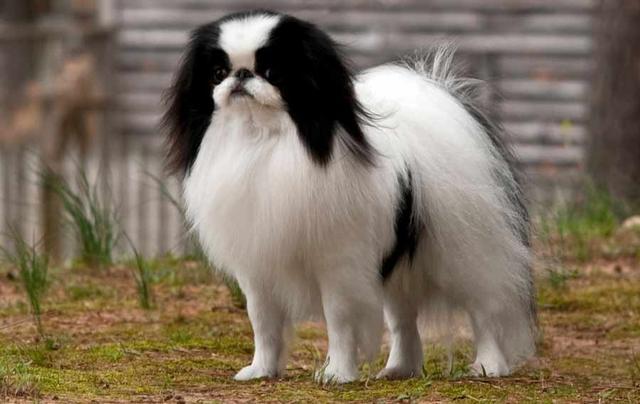Japanese Chin
IUCN
LCBasic Information
Scientific classification
- name:Japanese Chin
- Scientific Name:Japanese Spaniel
- Outline:Carnivora
- Family:Canidae
Vital signs
- length:18-28cm
- Weight:2-7kg
- lifetime:12-13year
Feature
Royal dogs of the past
Distribution and Habitat
A small dog native to Japan
Appearance
The eyes of the Japanese Chin are wide-set, large, round, dark and shiny. A small amount of white can be seen in the corners of the eyes, which is unique to the breed and gives the animal an appearance of surprise. The ears are drooping, small, V-shaped, and set wide apart, set low on the top of the head. When alert, the ears are turned forward and downward. The ears are well feathered and fit the skull to form a rounded outline. The skull is large, broad, and slightly rounded between the ears, but not domed. The forehead is prominent and level with the nose. The width is about the same as the distance between the eyes. When viewed from the side, the forehead and muzzle are in the same vertical plane, at right angles to the horizontal plane of the top of the head. The stop is deep. The muzzle is short and wide, with wrinkled cheeks and lips that just cover the teeth. The nose is very short and wide, with wide nostrils. The tip of the nose is level with the eyes and in the middle, and t
Details
The Japanese Chin's ancestor is the Chinese dog, which, like the Pug and Pekingese, is a descendant of the Tibetan Spaniel. Its long history can be traced back to 2,700 years ago.

In 732 AD, the fourth year of Emperor Shomu's Tenpyo reign, the Korean royal family sent the ancestor of the Japanese Chin (the Chinese Lhasa bird-hunting dog) to the Japanese court, where it was formed into a fixed breed after years of crossbreeding. At that time, the Japanese royal family and the privileged class of the upper class loved this exotic small dog very much. In 1853, Admiral Bailey brought several Japanese Chins back to his country, and Westerners finally had the opportunity to meet this elegant and exquisite small dog. After arriving in the United States, the Japanese Chin was infected by a virus and almost became extinct. The number of Japanese Chins on both sides of the Atlantic Ocean is increasing. In the 19th century, Japanese Chins entered Western Europe and the United States one after another. After arriving in the United States, they were infected by a virus and almost became extinct. According to relevant experts, breeders in Great Britain have hybridized Japanese Chins with their own small dogs. Because Japanese Chins are very similar to King Charles's small dogs. Like all flat-cheeked breeds, Japanese Chins have respiratory and heart problems. Because in Japan, Japanese Chins belong to noble ladies. So in Europe and the United States, they are also companion dogs for the rich.
Because Japanese Chins are loved by the royal family and generals, this dog has a relatively prominent position in the dog world.
Japanese Chin is full of affection for familiar and favorite people, but reserved for strangers or new situations. Japanese Chin has lively expressions, is curious, alert and smart. Although it is small in size, it is strong and likes to go walking, picnic, mountain climbing and other outdoor activities with its owner. It is a very suitable pet dog for urban breeding.
Protect wild animals and eliminate game.
Maintaining ecological balance is everyone's responsibility!








